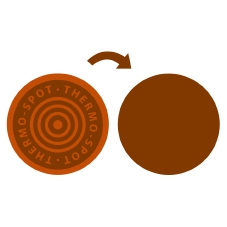News

EGG-CELLENT TIPS FOR PERFECT EGGS EVERY TIME
What may seem like the easiest cooking skill to some completely escapes others, even if they know how to whip up more complicated dishes. You’d think that knowing how to cook eggs would be a basic skill everyone picks up at some point, but there are still those who are still unsure of some basic rules when cooking eggs. If this sounds like you, then we are coming to the rescue just in time! To help you perfect your egg skills, here are our quick and easy tips on the best ways to boil, poach and scramble eggs so you’ll never have to Google what to do ever again.

How to fry an egg
A staple Canadian breakfast, the perfect fried egg can be quite elusive. We all have our own preference when it comes to how we like our fried eggs cooked – from a runny yolk to a solid one – but the method for getting yours right every time is the same, it’s the timings that change. To start with, heat a small amount of oil in a pan until it is hot but not spitting – our T-fal Thermo-Spot heat indicator will let you know when your pan is at the right temperature. Once the oil is ready, crack your egg directly into the pan, turning down the heat if it starts to spit in order to avoid burning. Place a lid on your pan to help cook the tops of your eggs without having to flip your egg over and to ensure the yolk is cooked through. You can check how cooked the egg yolk is by removing the lid and gently tapping the yolk with your spatula to see how much movement there is. When you’re happy with your egg, remove it from the pan and place it on kitchen towel to remove excess oil before putting on your plate and seasoning with salt and pepper. Now you just need the rest of your breakfast to finish the dish off.
How to boil an egg
Boiling an egg is meant to be one of the easiest cooking methods, but this doesn’t mean that it isn’t without its tricks. For starters, you’re best off using room temperature eggs, as this will stop them from cracking when they’re cooking. Secondly, you should always use a timer to make sure you aren’t left with a completely runny egg or one that is as hard as a rock. You also have slightly different techniques depending on whether you want to hard boil or soft boil your egg.
- Hard boil: For hard boiling, you should pop your egg in a pan of cold water before bringing it up to the boil. When your water is gently bubbling away, start your timer, which should be set for between seven and ten minutes.As you probably know, the longer you boil your egg for, the harder it will it end up. However, boiling for too long can also burn your egg and let your pan boil dry, so ten minutes is a good end point.When your timer goes off, take your egg out of the water straight away and put it in a bowl of cold water for at least a minute. This will stop it from carrying on cooking so it isn’t harder than you’d like.
- Soft boil: If you want a soft boiled egg – which is the best option for egg and soldiers – you need to have the water boiling before you put it in the pan. When your water is boiling, use a spoon to gently lower the egg into it in order to avoid it cracking.The amount of time you let your egg boil depends largely on its size and your preference. Large eggs need around four minutes to cook through but to keep the yolk runny, while medium eggs will need around three-and-a-half minutes. This will result in the white being just set, so if you want your eggs to firm up more, keep them in the water for another 30 seconds to a minute.You can also use the cold water trick with soft boiled eggs, although serving them straight away is a good way to ensure the white firms up a bit more.
How to poach an egg
There are a few ways to make poached eggs a bit easier, such as by using a dedicated egg poacher, but you can get by with just a pan of water and some vinegar. However, you get best results with fresh eggs, so this is worth bearing in mind.Start by bringing your water to a steady simmer before adding a splash of vinegar to the pan – you don’t need a lot so don’t be heavy-handed. Get your eggs ready by cracking them into individual ramekins or bowls. When it comes to adding them to the water, use a spoon to create a mini whirlpool in your pan before slowly tipping an individual egg in. This is important as it helps to keep the egg white wrapped around the yolk, which protects it from breakage and looks good. Cook your egg for three minutes before using a slatted spoon to remove it from the water. Drain excess water by placing it on kitchen towel and tidy up the edges by snipping away any wispy bits with a pair of scissors – now enjoy!
How to scramble eggs
You’ve got two different options when it comes to scrambling eggs, so the one you choose mostly depends on how much time you have and what you are mixing with your eggs.
- In the microwave: The first way is to cook them in the microwave, which is fast and easy, although if you don’t keep an eye on your eggs, they can easily overcook. Simply break your eggs into a microwaveable container – a good rule of thumb is two or three eggs per person – add salt, pepper and a splash of milk.Use a fork or a whisk to break the yolks and scramble them up to create a light yellow mixture. Put them in the microwave for 30 seconds at a time, giving them a good mix between each time, until they reach the consistency you want.Remember that they will keep cooking for a few minutes once they are done, so if they are almost perfect, let them sit for a moment before giving them a final stir and serving them up.
- On the stove-top: If you want super buttery and creamy scrambled eggs, doing them on the stove is the best option. This method is better if you want to swap the milk for cream or creme fraiche, which creates richer eggs.Start by preparing your eggs as above and heating your T-fal non-stick frying pan before adding a knob of butter – you can use oil but butter improves the flavour. Don’t let the butter brown or it can make your eggs stick and give a bitter flavour. When all the butter is melted, pour your scrambled egg mixture into the pan and let it sit for 20 to 30 seconds until it starts to cook. Use a wooden spoon to stir your eggs, being careful to fold them from the bottom to allow for even cooking.Repeat this sitting and stirring process until your eggs are cooked almost to how you like them, before removing them from the heat to allow them to finish cooking before serving.

